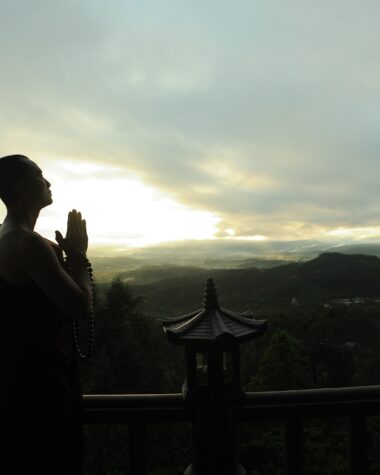Christmas celebrated on December 25th, is one of the most cherished holidays across the globe. While rooted in Christian traditions commemorating the birth of Jesus Christ, Christmas has transcended religious boundaries, becoming a celebration of love, joy, and giving. Over the centuries, various regions have developed unique customs, blending local culture with the spirit of the season.
In this article, we explore the history and cultural significance of some of the most fascinating Christmas traditions worldwide.
The Origin of Christmas Traditions
The celebration of Christmas dates back to the 4th century when the Roman Empire officially recognized December 25th as the birthdate of Christ. The choice of this date coincided with pagan winter solstice festivals like Saturnalia, making it easier for Christianity to spread among diverse populations. Over time, these pagan and Christian elements merged, giving rise to many beloved traditions.
Christmas in Europe: A Blend of Ancient and Modern Customs
Germany: The Birthplace of the Christmas Tree: Germany is credited with popularizing the Christmas tree, a tradition that dates back to the 16th century. Martin Luther, the Protestant reformer, is said to have decorated a fir tree with candles to mimic the starry night sky. Today, Germans celebrate with elaborate Christmas markets, such as the Christkindlmarkt in Nuremberg, where visitors can enjoy mulled wine, gingerbread, and handcrafted ornaments.
United Kingdom: Crackers and Carols: British Christmas customs are steeped in Victorian-era traditions, largely influenced by Queen Victoria and Prince Albert. Christmas crackers, paper tubes filled with small toys, jokes, and paper crowns, are a staple at holiday dinners. Carols, often sung door-to-door, evoke the communal joy of the season, with classics like “Silent Night” and “O Come All Ye Faithful” being universal favorites.
Scandinavia: Lights in the Dark: In Nordic countries, the darkness of winter is illuminated by Christmas celebrations that emphasize light. In Sweden, St. Lucia’s Day on December 13th features processions of children wearing white robes and crowns of candles. Yule, the ancient Viking winter festival, influences modern customs, such as the burning of the Yule log.
Christmas in the Americas: A Cultural Mosaic
United States: A Melting Pot of Traditions: In the United States, Christmas is celebrated with a blend of customs from various immigrant communities. From Christmas parades to elaborate light displays, the holiday is a grand spectacle. Santa Claus, inspired by the Dutch figure Sinterklaas, takes center stage, bringing gifts to children.
Mexico: Las Posadas and Piñatas: In Mexico, Christmas celebrations begin with Las Posadas, a nine-day reenactment of Mary and Joseph’s search for shelter. Communities gather for processions, songs, and feasts. Piñatas, often shaped like stars, are filled with candy and symbolize the triumph of good over evil.
Brazil: A Summer Christmas: In Brazil, Christmas falls during the summer, influencing unique customs. Midnight Mass, or Missa do Galo, is followed by fireworks and outdoor feasts. Papai Noel, the Brazilian Santa Claus, wears silk robes to suit the warm weather.
Christmas in Asia: A Growing Tradition
The Philippines: Longest Christmas Season: The Philippines is home to the world’s longest Christmas season, starting as early as September. Festivities include the Simbang Gabi, a series of nine dawn masses, and the iconic Giant Lantern Festival in Pampanga. These traditions reflect the country’s deep Catholic roots and festive spirit.
Japan: A Romantic Holiday: In Japan, Christmas is celebrated more as a commercial and romantic holiday than a religious one. Couples exchange gifts and dine on KFC, a quirky tradition that began in the 1970s as part of a successful marketing campaign.
Christmas in Africa: Vibrant and Community-Oriented
South Africa: Summer Festivities: In South Africa, Christmas coincides with summer holidays, leading to outdoor celebrations like barbecues, called braais. Families come together to sing carols and enjoy traditional dishes, such as roasted meats and fruitcake.
Ethiopia: Ganna on January 7th: In Ethiopia, where the Ethiopian Orthodox Church follows the Julian calendar, Christmas is celebrated on January 7th. Known as Ganna, the day begins with a church service featuring traditional chanting and culminates in a feast.
The Cultural Significance of Christmas Traditions
Christmas customs are more than just festive activities; they reflect the values and history of the communities that practice them. The emphasis on family gatherings, gift-giving, and acts of kindness reinforces universal themes of love and generosity. Additionally, the blending of religious, cultural, and commercial elements shows how traditions evolve to remain relevant in a changing world.
Also Read: Essential Tips for Navigating Motherhood After an Accident: Finding Strength in Uncertainty
Conclusion
From the candlelit processions of Sweden to the colorful piñatas of Mexico, Christmas traditions showcase the rich diversity of human culture. These customs, while unique in their expression, share a common purpose: to bring people together in celebration and gratitude. As we honor these traditions, we not only preserve history but also create meaningful connections across generations and cultures. Whether through the warmth of a Yule log or the sparkle of a Christmas tree, the spirit of Christmas continues to inspire joy and unity around the world.







